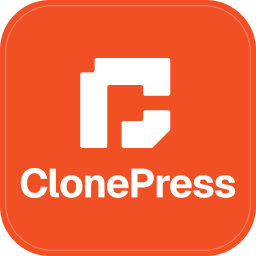If you use Unbounce to create high-converting landing pages, you’ve probably looked for ways to save time and simplify your design workflow. One of the quickest tricks in the book? Importing or uploading pre-built Unbounce templates.
Whether you’ve purchased a sleek landing page from Ilmosys Market, downloaded a freebie from a design blog, or collaborated with another designer, importing those templates into your Unbounce account is straightforward—and a massive time-saver.
Working with Unbounce? Don’t Miss this Awesome Deal!
Exclusive Offer: 35% OFF with Tutsflow’s Unbounce Coupon Code
What is a .unbounce Template?
A .unbounce file is a proprietary file type exported directly from Unbounce. It contains the entire structure of a landing page, including its:
- Layout and section structure
- Images and other assets
- Forms, buttons, and call-to-actions (CTAs)
- Fonts, colors, and styling settings

You can think of it as a packaged landing page blueprint. These files are especially useful if:
- You’ve downloaded a landing page template from a third-party designer
- You’re collaborating with others and want to share pages between accounts
- You want to back up your designs locally
- You’re creating your own library of reusable Unbounce templates
Important: Unbounce only supports .unbounce file uploads. Other formats like .zip, .html, .json, or .psd will not work.
What You’ll Need Before You Start
Before you upload any Unbounce templates, double-check that you have the following:
✅ An active Unbounce account (Free trial or paid plan)
✅ A .unbounce file stored on your computer
✅ A reliable internet connection
✅ (Optional) A content plan or campaign strategy to speed up customization
How to Upload Unbounce Templates (Step-by-Step)
Uploading a template is a breeze once you know where to go. Follow these steps to import your Unbounce template without a hitch.
Step 1: Log In to Your Unbounce Account
Head to app.unbounce.com and log in using your credentials. You’ll land on the main dashboard where all your existing landing pages are listed.
Step 2: Click “Upload an Unbounce Page”
In the upper right corner of your dashboard, click the button labeled “Upload an Unbounce Page.”
This is your gateway to uploading external .unbounce files into your account.
Step 3: Choose Your .unbounce File

A popup will appear asking you to upload your file. Click “Choose File”, then navigate to the folder where your .unbounce file is saved. Select the file and confirm.
Step 4: Click “Upload” and Wait
Click the “Upload” button to begin the import process. You’ll see a progress bar as Unbounce processes the file.
Depending on the file size and your internet speed, this might take a few seconds to a minute.
Step 5: Wait for Confirmation
Unbounce will notify you when the template has been successfully added. You’ll also receive an email confirmation. Once that’s done, your new landing page will appear in your dashboard, ready for editing!
What to Do After You Upload a Template?
Congrats! You’ve successfully imported your Unbounce template. Now it’s time to customize and optimize it for your campaign.
Note: Uploaded templates only work with Classic Builder. If you’re using Smart Builder, the template will not be editable.
To edit, click on your uploaded page to open it in Classic Builder. From there, you’ll have full access to all drag-and-drop elements.
Customizing Your Imported Unbounce Template
Here’s how to take your newly uploaded Unbounce template and make it truly yours.
1. Personalize the Design
Update colors, fonts, logos, and branding elements to match your company’s style. Most third-party templates are built with placeholders, so swapping in your brand assets is easy.
2. Edit the Content
Replace the demo text with your own copy. Update:
- Headlines and subheadings
- Bullet points and CTAs
- Testimonials or client logos
Pro tip: Use concise, benefit-driven copy that focuses on your audience’s pain points and desires.
3. Optimize for Mobile
Click the mobile icon in the top bar to switch to mobile preview. Ensure buttons, forms, and images display correctly on smaller screens.
Most templates are mobile-responsive by default, but small tweaks can make a big difference.
Don’t Forget to Read about How to add smooth scrolling into unbounce landing page

4. Integrate with Marketing Tools
Unbounce allows easy integration with tools like:
- Mailchimp
- HubSpot
- ConvertKit
- Zapier
- Google Analytics
- Meta Pixel (Facebook)
If your template includes a form, connect it to your preferred email marketing platform to begin collecting leads instantly.
5. Add Sticky Bars or Popups (Optional)
Want to boost conversions? Add sticky bars or exit-intent popups to your uploaded landing page. These can be used for:
- Countdown timers
- Lead magnets
- Special offers
You can create these in Unbounce’s Conversion Intelligence tools.
Reusing and Duplicating Uploaded Templates
One of the best parts of using Unbounce templates is that you don’t have to start from scratch again.
You can:
- Duplicate pages for A/B testing
- Clone templates across different campaigns
- Save your edited page as a new template
To do this, click on the page dropdown and select “Save as Template.”
This saves your fully customized landing page to your personal library for future use.
Also Learn How to Add Favicon Into Unbounce Landing Page Template
Common Issues When Uploading Unbounce Templates
While uploading templates is generally smooth, here are some common hiccups and how to fix them.
❌ File Doesn’t Upload
- Double-check that the file has the
.unbounceextension. - Make sure the file wasn’t renamed incorrectly by your browser during download.
- Try redownloading the template from its source.
❌ Page Doesn’t Show Up Immediately
- Refresh your dashboard.
- Wait for the confirmation email before trying again.
- Occasionally, Unbounce servers may experience a delay.
❌ Builder Compatibility Issues
- Remember: Templates only work in Classic Builder, not Smart Builder.
- If you try to open an uploaded template in Smart Builder, it won’t load.
Pro Tips to Optimize Your Unbounce Templates
Now that you’ve imported your template, here’s how to make sure it performs like a champ.
✅ Use A/B Testing
Unbounce makes it simple to create multiple variants of your page. Test different:
- Headlines
- Button colors
- Form placements
- Images or videos
Then, track which version drives more conversions.
✅ Track User Behavior
Use built-in Unbounce analytics or connect to Google Analytics to track:
- Bounce rate
- Conversion rate
- Click-through rate
These insights help you fine-tune your messaging and layout.
✅ Speed Test Your Page
A slow-loading page can kill conversions. Use tools like:
Compress large images and avoid loading unnecessary scripts to keep your pages fast.
Can You Export Your Own Unbounce Templates?
Yes, you can! If you’ve built a beautiful landing page and want to share or reuse it, export it as a .unbounce file.
Here’s how:
- Go to the page overview screen
- Click the gear icon (⚙️)
- Select Export Page
- Download the
.unbouncefile
You can now:
- Upload it to another account
- Sell it on marketplaces like ThemeForest or Ilmosys
- Create a backup library for clients or team members
Check out 15+ Best Unbounce Landing Page Templates
Final Thoughts
Learning how to import or upload Unbounce templates is a powerful way to scale your landing page creation process. It saves time, reduces repetitive work, and gives you a head start with professionally designed layouts.
Whether you’re uploading free templates or premium designs, Unbounce makes it easy to:
- Customize quickly
- Launch faster
- Optimize smarter
So go ahead—download a .unbounce file, upload it using the steps above, and build a high-converting page today. Don’t miss out on our Unbounce Review, where we talk in detail about its features.
Need help choosing the right template, optimizing for mobile, or improving conversion rates? Drop your questions below or explore our other tutorials to level up your Unbounce game!

